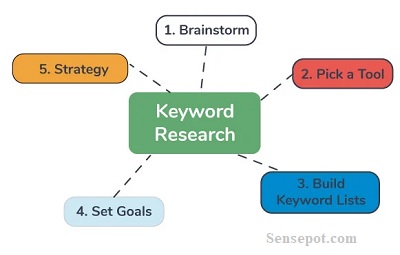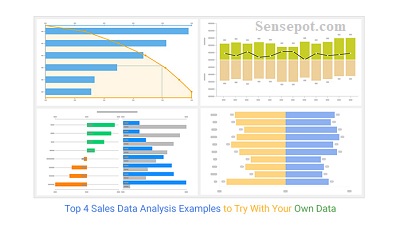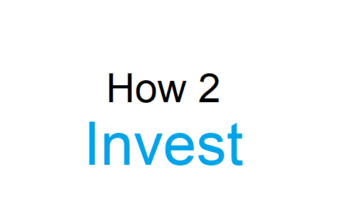In the highly competitive world of e-commerce, Amazon stands tall as the leading marketplace, attracting millions of buyers and sellers worldwide. As an online seller, understanding the dynamics of the Amazon market is crucial to succeed. This article aims to provide you with a comprehensive guide on conducting A to Z market research on Amazon, enabling you to make informed decisions and optimize your selling strategies.

1. Amazon Market Research
What is Amazon Market Research?
Amazon market research involves gathering and analyzing data about products, customer preferences, competitor strategies, and market trends on the Amazon platform. It provides valuable insights that help sellers make data-driven decisions and maximize their chances of success.
Why is Market Research Important for Amazon Sellers?
Market research is vital for Amazon sellers to identify profitable product opportunities, understand customer needs, assess competition, optimize product listings, and formulate effective marketing strategies. It helps sellers save time, resources, and effort by focusing on products with high demand and profit potential.
2. Identifying Profitable Product Niches
Assessing Market Demand and Trends
Before diving into selling on Amazon, it’s crucial to identify product niches with sufficient demand. Research popular categories, analyze bestseller rankings, and look for products with a consistent sales history. Pay attention to emerging trends and seasonal fluctuations to capitalize on opportunities.
Analyzing Competitor Landscape
Study your competitors to understand their offerings, pricing strategies, and customer reviews. Look for gaps in the market that you can fill with unique features or better customer service. Identify ways to differentiate your products and offer value that sets you apart from the competition.
3. Conducting Keyword Research
Importance of Keywords on Amazon
Keywords play a crucial role in driving organic traffic to your product listings. Research relevant keywords that customers use to search for products similar to yours. Incorporate these keywords strategically in your product titles, bullet points, and product descriptions to improve visibility in Amazon’s search results.

Tools for Keyword Research
Several tools can assist you in conducting keyword research effectively. Popular options include Amazon’s own “Search Term Report,” third-party tools like Helium 10, Jungle Scout, and MerchantWords. These tools provide valuable insights into search volume, keyword competition, and related keyword suggestions.
4. Evaluating Product Viability
Assessing Product Reviews and Ratings
Customer reviews and ratings are crucial indicators of product viability. Pay attention to both positive and negative feedback to understand customer expectations and identify areas for improvement. Aim for a high average rating and strive to provide exceptional customer service to build trust and credibility.
Examining Pricing and Profit Margins
Pricing your products competitively is essential for success on Amazon. Analyze the pricing of similar products in your niche and determine an optimal price point that balances profitability and customer appeal. Consider factors such as manufacturing costs, fulfillment fees, and shipping expenses to calculate profit margins accurately.
5. Optimizing Product Listings
Crafting Compelling Product Titles
An attention-grabbing product title is crucial for attracting potential buyers. Include relevant keywords, highlight key features, and emphasize unique selling points. However, ensure that the title remains concise and easy to read. Avoid keyword stuffing, as it can negatively impact your listing’s visibility.
Writing Persuasive Product Descriptions
Product descriptions should be informative, persuasive, and engaging. Highlight the benefits of your product, address customer pain points, and provide a clear call to action. Use bullet points to break down features and specifications for easy readability. Incorporate relevant keywords naturally throughout the description.
Leveraging Enhanced Brand Content (EBC)
Enhanced Brand Content allows registered brand owners to create more visually appealing and informative product listings. Utilize this feature to showcase high-quality images, videos, and detailed descriptions. EBC enhances the overall shopping experience and can positively influence buyer decisions.
6. Monitoring and Analyzing Sales Performance
Tracking Sales Metrics
Monitor key sales metrics to assess the performance of your products. Keep an eye on metrics like conversion rate, units sold, average order value, and customer acquisition costs. Identify patterns, trends, and areas of improvement to refine your selling strategies and drive growth.
Utilizing Amazon Seller Central Analytics
Amazon Seller Central provides valuable analytics and reporting tools to track your sales performance. Use these insights to evaluate the effectiveness of your marketing campaigns, measure the impact of optimizations, and make data-driven decisions. Leverage features like Business Reports, Advertising Reports, and Customer Behavior Reports.

7. Leveraging Advertising and Promotion Strategies
Sponsored Product Ads
Sponsored Product Ads allow sellers to promote their products within Amazon’s search results. Create targeted campaigns, choose relevant keywords, and set a competitive bid to increase product visibility. Regularly monitor and optimize your ad campaigns to maximize returns on your advertising investment.
Amazon Coupons and Discounts
Offering coupons and discounts can attract price-conscious shoppers and incentivize them to choose your products over competitors. Utilize Amazon’s coupon feature to provide temporary price reductions or offer discounts on multiple purchases. Promote these offers on your product listings to grab the attention of potential buyers.
You can also get High-Quality Remodeling Services by Bear Builder {2023}
Influencer Marketing on Amazon
Collaborate with influencers in your niche to promote your products and expand your reach. Identify influencers with a relevant audience, negotiate mutually beneficial partnerships, and provide them with free samples or exclusive discounts. Influencer marketing can generate valuable social proof and drive sales.
8. Building a Strong Brand Presence
Creating an Eye-Catching Logo and Packaging
Invest in professional logo design and packaging to create a memorable and recognizable brand identity. A visually appealing logo and attractive packaging can leave a lasting impression on customers, build brand loyalty, and set your products apart from generic alternatives.
Utilizing Product Photography and Videos
High-quality product images and videos are essential for showcasing your products effectively. Invest in professional product photography that highlights the features, dimensions, and usage of your products. Use lifestyle images and demonstration videos to give potential buyers a better understanding of your offerings.
Soliciting Customer Feedback and Reviews
Positive customer feedback and reviews are powerful social proofs that can boost sales and increase buyer confidence. Encourage customers to leave reviews by providing exceptional customer service, sending follow-up emails, and offering incentives. Respond promptly to any negative feedback and resolve customer issues promptly and professionally.
9. Staying Updated with Amazon Policies and Guidelines
Amazon’s Terms of Service
Amazon has specific policies and guidelines that sellers must adhere to. Familiarize yourself with Amazon’s Terms of Service, including rules related to product listings, customer communication, and seller performance. Failure to comply with these guidelines can result in account suspension or termination.
Prohibited and Restricted Products
Ensure that the products you sell comply with Amazon’s prohibited and restricted product policies. Selling prohibited items or failing to meet specific category requirements can lead to account suspension and legal consequences. Regularly review and stay updated on these policies to avoid any compliance issues.
Conclusion
Conducting comprehensive A to Z market research is essential for Amazon sellers looking to succeed in the competitive e-commerce landscape. By understanding market demand, evaluating product viability, optimizing listings, monitoring performance, leveraging advertising strategies, building a strong brand presence, and staying compliant with Amazon policies, you can position yourself for success on the Amazon marketplace.
FAQs
How can I find profitable product niches on Amazon?
- Research popular categories and bestseller rankings
- Analyze market trends and emerging opportunities
- Identify gaps in the competition and unique value propositions
What are the best tools for conducting keyword research?
- Amazon’s Search Term Report
- Third-party tools like Helium 10, Jungle Scout, and MerchantWords
How do I optimize my product listings for better visibility?
- Craft compelling product titles with relevant keywords
- Write persuasive product descriptions with clear benefits\
- Utilize Enhanced Brand Content for a visually enhanced experience
What metrics should I track to monitor my sales performance?
- Conversion rate
- Units sold
- Average order value
- Customer acquisition costs
Can I sell any products on Amazon?
- No, Amazon has policies regarding prohibited and restricted products that sellers must adhere to. Familiarize yourself with these guidelines to avoid account suspension or legal issues.


